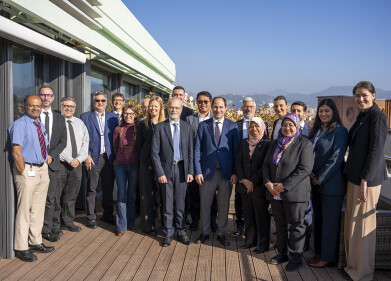Air clean up
How Many Pollution Sources Does China Have?
Apr 05 2018
The preliminary results of an environmental census show that China currently has around nine million sources of pollution across the country. That represents a 65% increase from the statistics compiled eight years ago in 2010.
Although the dramatic increase in the number of sources is concerning, it does not necessarily mean that overall pollution is on the rise. The census is not due for publication until next year and no concrete information can be provided until then, but other studies have indicated that airborne pollution in some of the nation’s biggest cities has decreased in recent years.
Flouting the law
Although China does have legislation controlling the amount of emissions that each power plant or factory is allowed to emit (similar to the EU’s Directive on Industrial Emissions), many locations do not respect such laws. In fact, flouting emissions standards are believed to be responsible for the vast majority of pollution in the country.
The second census, still undergoing review, found 7.4 million sources of industrial pollution. For comparison, a mere half a million pollution sources were found in towns, cities and other built-up areas, while there were roughly one million in rural parts of the country. Cumulatively, that adds up to approximately nine million sources in total, which is a significant step up from the 5.9 million found in the first census in 2010.
Turning a new leaf
In 2011, it was found that Chinese power plants emit as much nitrous oxides (NOx) as all the passenger cars in the world. In response, the government declared a “war on pollution” in 2013, implementing a whole series of measures and reforms to try and tackle the country’s terrible reputation as the world’s biggest polluter.
Among others, these included blocking the construction of new coal plants and forcing old ones to reduce their emissions, removing coal boilers from residential properties and restricting the number of vehicles allowed on the road every day. Just last month, the government consolidated a number of different departments into the newly created Ministry of Ecological Environment, creating a holistic approach towards problems of pollution.
Fledgling signs of success
While China clearly still has a long way to go in curbing its contamination, recent studies have been encouraging. A report from the Energy Policy Institute (EPI) at the University of Chicago in the US compiled data gathered by pollution sensors between 2013 and 2017 and found that in many of China’s most populous cities, the concentration of certain contaminants had shown a significant decrease.
“By winning this war, China is due to see dramatic improvements in the overall health of its people, including longer lifespans, if these improvements are sustained,” remarked Michael Greenstone, director of the EPI and author of the paper. Hopefully, the second census will bear out his conclusions on a more comprehensive scale.
Events
Feb 05 2025 Nantes, France
Feb 16 2025 Kampala, Uganda
Feb 26 2025 Chennai, India
Feb 26 2025 Tulsa, OK, USA
WATERTECH CHINA (GUANGDONG) 2025
Mar 05 2025 Guangdong, China












